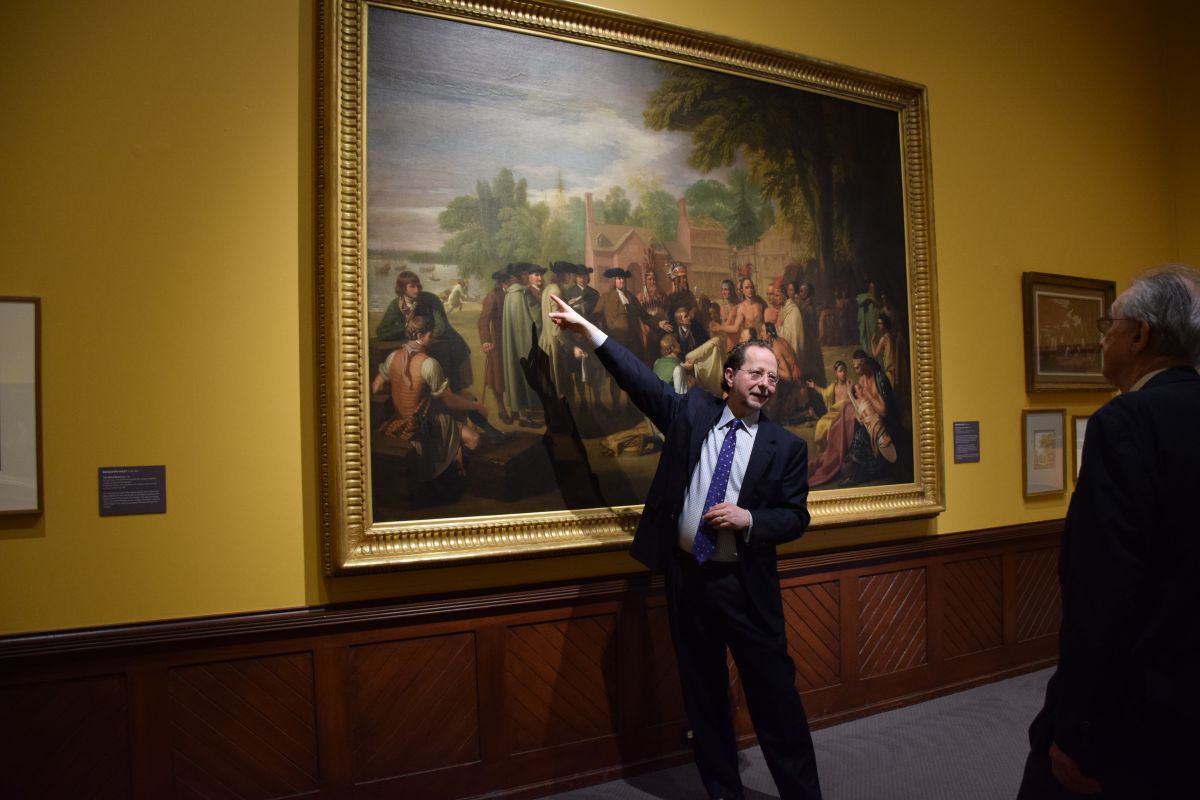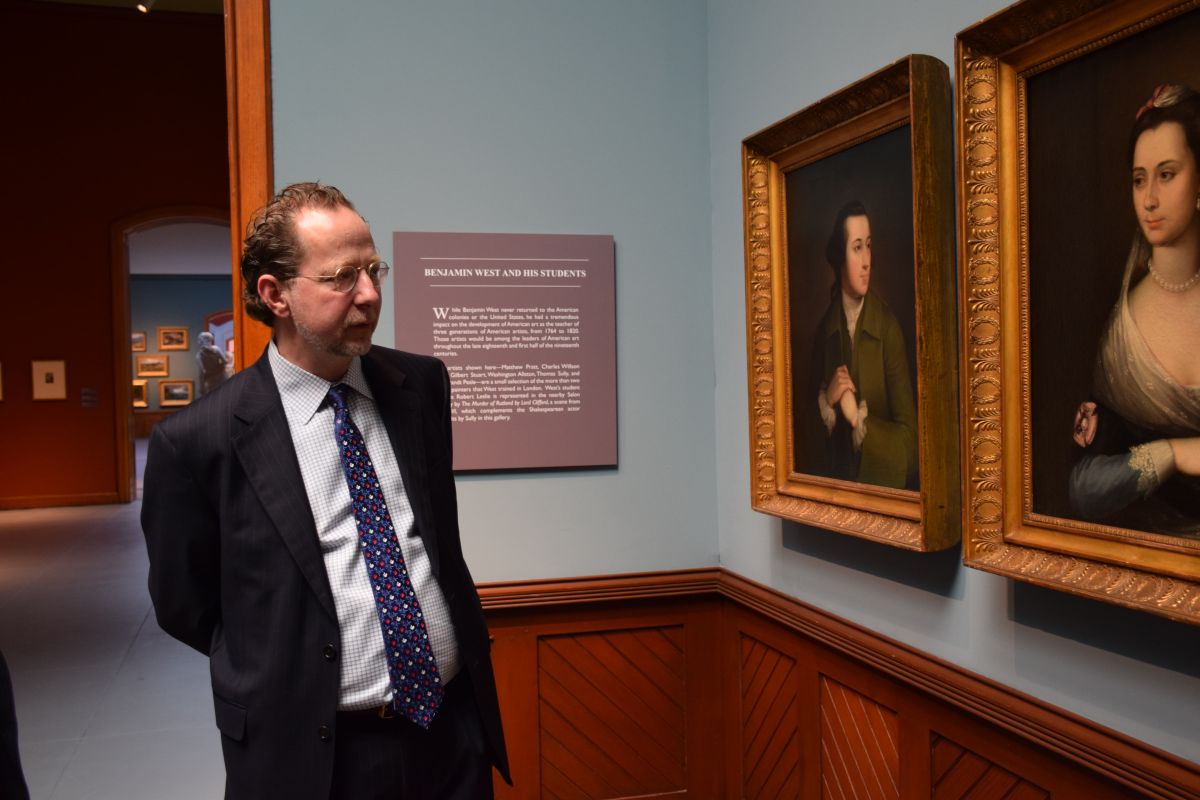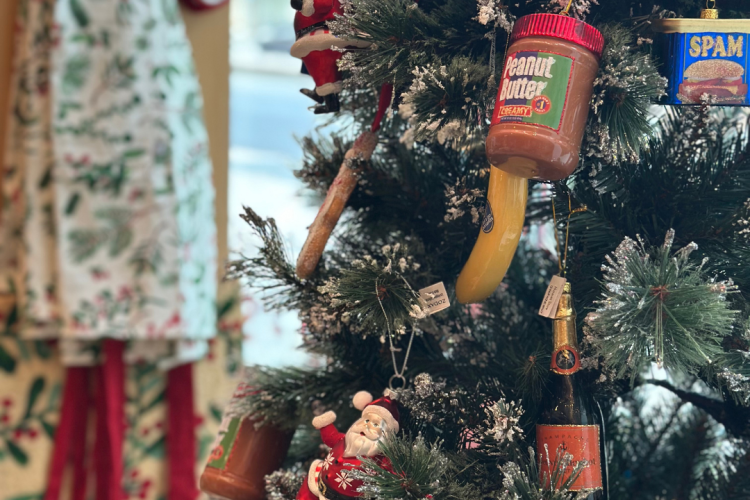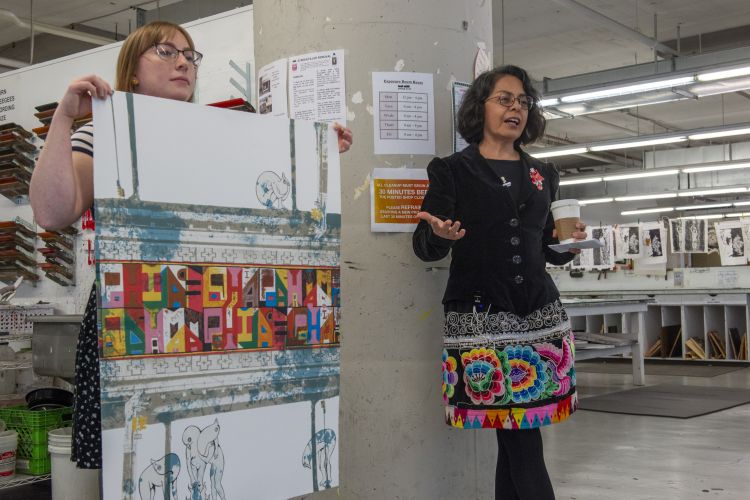STORIES FROM PAFA
Tracing America’s Early History Through PAFA
As a result of the 250th anniversary of the founding of the Royal Academy of Arts (RA) in London, PAFA is exploring the role painter Benjamin West (1738—1820) played in founding each of these first sustained academies in England and the United States.
With more than sixty paintings, drawings, prints, sculptures, manuscripts, and books, the exhibit entitled First Academies: Benjamin West and the Founding of the Royal Academy of Arts and the Pennsylvania Academy of the Fine Art looks at the history of PAFA, of eighteenth- and early-nineteenth-century American artists, and the development of monumental history paintings such as Christ Rejected and Death on the Pale Horse, and of a slice of American history.
The curator of First Academies, David Brigham, CEO and President of PAFA, describes a document on display in the show—Independence Hall provided the backdrop for the signing of the Declaration of Independence, the Constitution, and also the founding charter for the Pennsylvania Academy of the Fine Arts.
“It’s called the Articles of Association. The document was signed in Independence Hall in 1805,” said PAFA President David Brigham. “It was a very self-conscious act of having the founding document signed in the same building where the Declaration was first read. I think it makes a statement that this is about building a civilization and not just a nation.”
The charter was signed by 71 supporters, including four signers of the Declaration of Independence.
PAFA’s founding document is on display as part of the exhibition which takes history-lovers through the early days of the Academy and the country through the lens of the artist Benjamin West.
West, a celebrated artist and native Pennsylvanian served as PAFA’s first and only Honorary Academician. He advised PAFA’s founders on the importance of drawing from casts of ancient Greek sculptures as well as from live models and anticipated that PAFA would help Philadelphia to become the “Athens of the western world in all that can give polish to the human mind.”
Penn's Treaty with the Indians by Benjamin West depicts William Penn entering into a peace treaty in 1683 with Lenape tribe members from the Delaware area. Several portraits of America’s first president, George Washington, are on display from PAFA’s permanent collection.
Visitors can also see paintings that were on display for PAFA’s first exhibition. West’s Self-Portrait was a part of PAFA’s inaugural show in 1807 and is now being shown in PAFA’s Historic Landmark Building.
West is not only tied to PAFA’s beginnings but he helped found the Royal Academy in London in 1768. He went on to serve as the second president of the academy, but believed PAFA had an edge over the British academy in some aspects. Several of West’s letters are being exhibited and he applauds PAFA’s founders for center the school and museum around American art.
“There is a passage where West applauds the Pennsylvania Academy for being an American academy,” Brigham said. “He says that they have suffered in London because they immediately made the Royal Academy an international academy and that meant there was never support for the development of a British school of art. He felt he and other artists had suffered because of it.”
But despite spending almost all of his adult-life in England, Brigham said West always considered himself an American. He was a close friend of King George III, not only painting the monarch but also remaining a confidant even through the American Revolution.
“They became more than just patron and art leader, they used to get together and play cards and chess, and talk. The king really enjoyed his company and they used to joke that they were so close that they’d die together, and they died within a few months of each other, like an old married couple,” Brigham said. “There’s no documentation, but they had to talk about the revolution.”
West died in 1820 but his impact continued to be felt on PAFA and American art. The painting Death on a Pale Horse was considered such an important work that academy leaders mortgaged the building in the 1830’s to raise $7,000 to buy the piece from West’s estate.
The painting was almost lost forever when a fire destroyed the Academy’s first building and much of its collection. Volunteer firemen cut the huge painting from its singed stretcher allowing it to be saved and enjoyed by art-lovers for more than 150 years.
Although the painting is considered the artist’s final major work, Death on a Pale Horse is still revealing new things about the artist today. The paint has become transparent in certain spots on the oversized canvas and West’s original drawings and intentions for the scene have been revealed.
During his lifetime West educated three generation of American artists in his London studio, and now through First Academies, young artists can once agin learn from a master.


We're so excited you're planning to visit PAFA!
Make time for art — visit us Thursday to Sunday.
Before reserving your tickets, please review helpful information about museum hours, accessibility, building access, and special admission programs.
If you have any questions, feel free to reach out to us at visitorservices@pafa.org — we’d love to help!



